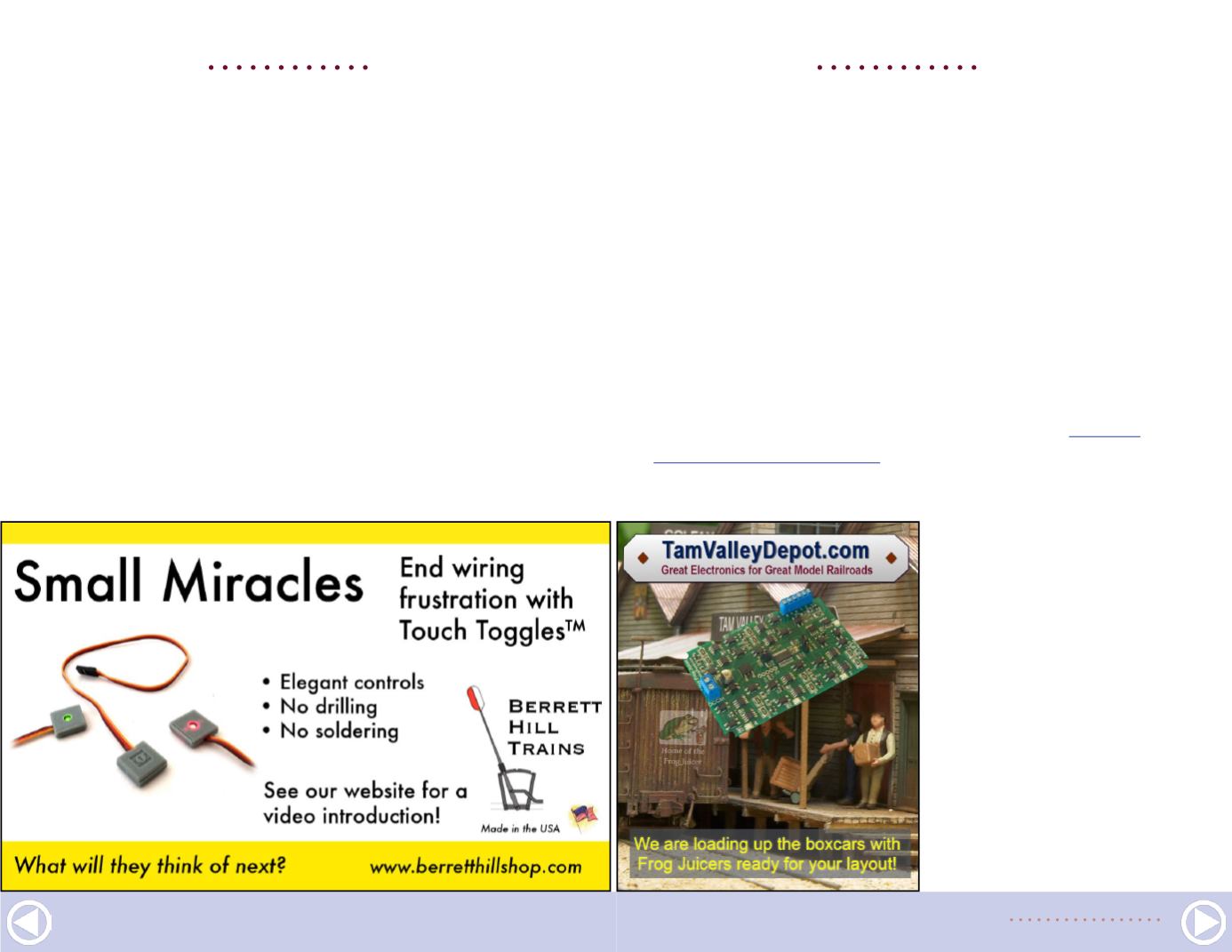
DCC IMPULSES |
9
One of the great things about DCC is the ability to totally auto-
mate this reverse switching. Automation is not as simple as just
hooking a module up to the reversing loop as [1] would imply.
Like so many things in model railroading, a bit of planning can
go a long way.
Do I have a reverse section?
Looking at a loop [1], it is pretty obvious that it is a reversing
section. However, as track designs get more complex, it is easy
to bury reversing sections inside the layout and not realize
they exist.
As I mentioned previously, a crossover on a dog-bone style
layout is a reversing section, but it is not immediately obvious.
If you look closely at the crossover [4a], it doesn’t seem to be
ADVERT I SEMENT
a reversing section. However, zooming out [4b] shows that it
really is a loop with a side entrance.
The more complex the track plan, the more difficult it is to see
reverse loops.
A Litchfield Station customer showed me an easy way to test
a layout. Color one side of a truck, either as part of a car or by
itself. Run it around the layout as part of a train or by hand. If
it comes back to the same point on the layout with the side
switched [5], it went through a reversing section.
How do auto-reversers work?
At this point, it would be good for you to review the section
on circuit breakers in my November 2014 column
. Auto-reversers connect between the
DCC bus and the track in the
loop. Whether they connect
before or after a circuit breaker
will be discussed later in the
column.
Auto-reversers work the
same way as electronic cir-
cuit breakers. The difference
is that when an auto-reverser
senses a short, it reverses the
polarity to the track rather
than disconnecting the track.
Some versions will actually
perform the circuit breaker
function as well. When they
DCC IMPULSES |
10
ADVERT I SEMENT


